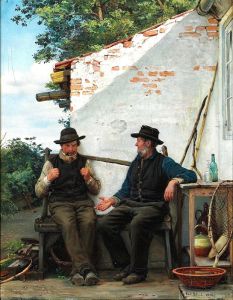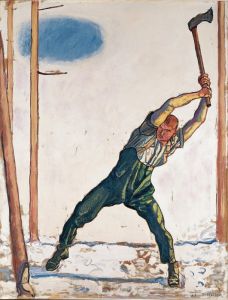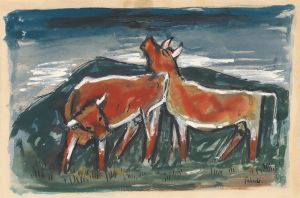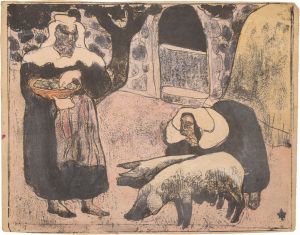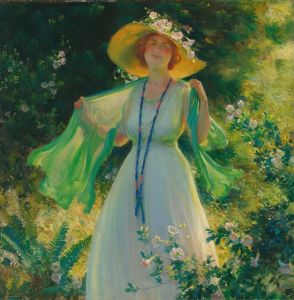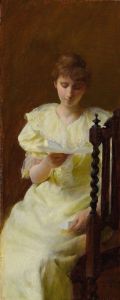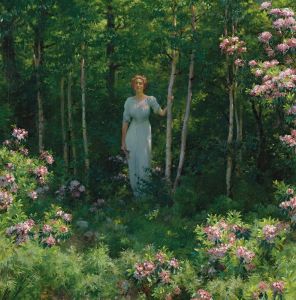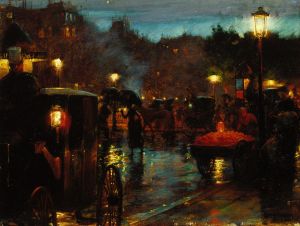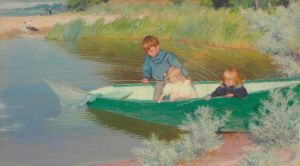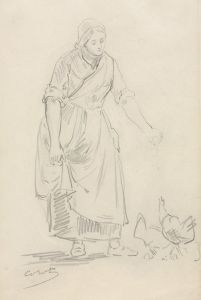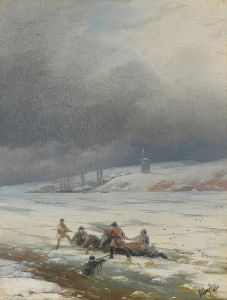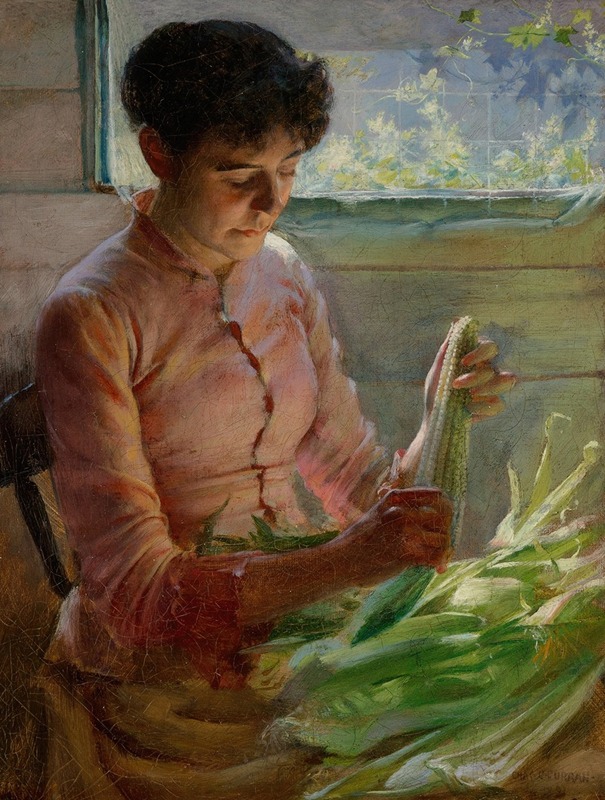
Shucking Corn
A hand-painted replica of Charles Courtney Curran’s masterpiece Shucking Corn, meticulously crafted by professional artists to capture the true essence of the original. Each piece is created with museum-quality canvas and rare mineral pigments, carefully painted by experienced artists with delicate brushstrokes and rich, layered colors to perfectly recreate the texture of the original artwork. Unlike machine-printed reproductions, this hand-painted version brings the painting to life, infused with the artist’s emotions and skill in every stroke. Whether for personal collection or home decoration, it instantly elevates the artistic atmosphere of any space.
Charles Courtney Curran was an American painter known for his depictions of women in idyllic settings, often capturing the essence of rural life and the beauty of nature. One of his notable works is "Shucking Corn," which exemplifies his style and thematic focus.
"Shucking Corn" is a painting that reflects Curran's interest in everyday rural activities, particularly those involving women. The painting portrays a scene of women engaged in the task of shucking corn, a common agricultural activity. Curran's choice of subject matter highlights the simplicity and beauty of rural life, as well as the important role women played in these settings.
Curran was born in Hartford, Kentucky, in 1861, and he later moved to Ohio. He studied at the Cincinnati School of Design and the National Academy of Design in New York City, where he honed his skills and developed his artistic style. Curran's work is often associated with the American Impressionist movement, characterized by its focus on light, color, and everyday scenes.
In "Shucking Corn," Curran employs a soft color palette and delicate brushwork to create a serene and harmonious composition. The painting captures the gentle interplay of light and shadow, a hallmark of Impressionist technique, which adds a sense of depth and realism to the scene. The figures in the painting are depicted with a sense of grace and poise, reflecting Curran's ability to convey the dignity and beauty of his subjects.
The setting of "Shucking Corn" is likely inspired by Curran's experiences in rural America, where he spent much of his time. He was known for his summer visits to Cragsmoor, New York, an artist colony where he found inspiration in the natural landscape and the simple, pastoral lifestyle. This environment provided Curran with ample opportunities to observe and capture scenes of rural life, which became a central theme in his work.
Curran's paintings, including "Shucking Corn," are celebrated for their ability to evoke a sense of nostalgia and appreciation for the simplicity of rural life. His work often features women engaged in various activities, set against the backdrop of lush landscapes and vibrant skies. This focus on women and nature reflects broader themes of harmony and tranquility, which are prevalent throughout Curran's oeuvre.
Throughout his career, Curran received numerous accolades for his work, and his paintings were exhibited widely in the United States and abroad. He was a member of several prestigious art organizations, including the National Academy of Design and the Society of American Artists. Curran's contributions to American art are recognized for their technical skill and their ability to capture the beauty of everyday life.
"Shucking Corn" remains an important example of Charles Courtney Curran's artistic legacy, showcasing his talent for depicting rural scenes with sensitivity and elegance. The painting continues to be appreciated for its artistic merit and its portrayal of a bygone era in American history.





